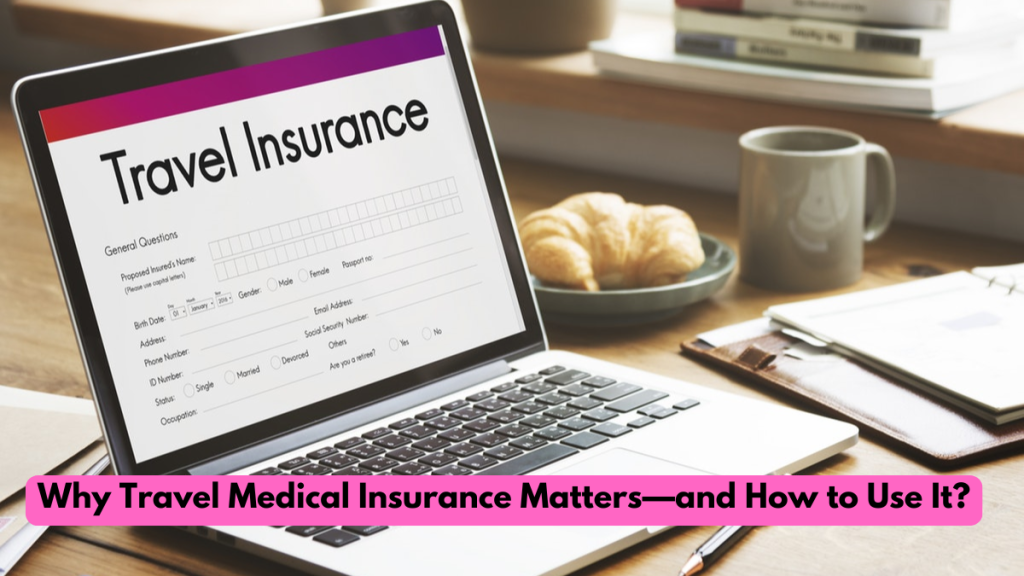
Traveling to a new country can be thrilling, but it also comes with its risks—especially when it comes to health and safety. If you’re planning an international trip, one important yet often overlooked safeguard is travel medical insurance. It can protect you from high medical costs abroad, provide emergency evacuation, and offer peace of mind so you can focus on enjoying your journey.
Here’s everything you need to know about what travel medical insurance is, how it works, and why it matters.
What Is Travel Medical Insurance?
Travel medical insurance is a short-term insurance policy that covers unexpected medical expenses when you’re outside your home country. Unlike your regular health insurance, which may offer limited or no coverage abroad, travel medical insurance is specifically designed to help you access healthcare overseas without breaking the bank.
It can be purchased for single trips, multiple trips, or even long stays, depending on your travel plans.
Key Features of Travel Medical Insurance
1. Emergency Medical Coverage
The core function of travel medical insurance is to cover the cost of emergency medical treatment. This includes hospital stays, surgeries, doctor visits, ambulance fees, and prescription medications. For instance, if you suffer a sudden illness like a heart attack or get injured in an accident, the policy will help cover the costs.
According to NerdWallet, these policies are essential because medical care abroad—especially in countries like the U.S. or Switzerland—can be incredibly expensive.
2. Emergency Medical Evacuation and Repatriation
If you become seriously ill or injured in a location that lacks adequate medical facilities, your insurance can cover the cost of emergency evacuation to a better-equipped hospital. It also includes repatriation—transporting you back home for treatment if necessary.
The National Association of Insurance Commissioners (NAIC) emphasizes the importance of evacuation coverage, especially if you’re visiting remote or rural destinations.
3. Accidental Death and Dismemberment (AD&D)
Many policies offer AD&D benefits, which pay out a lump sum in case of death or severe bodily injury (such as loss of a limb) during your travels.
How Travel Medical Insurance Works?

Step 1: Buy the Policy
You can purchase travel medical insurance online through providers, brokers, or travel agencies. Most plans allow customization based on your age, destination, and length of stay.
For a list of licensed insurers, you can visit HealthCare.gov if you’re a U.S. citizen or consult your country’s travel advisory website.
Step 2: Check Coverage Dates
Coverage usually starts the day you leave your home country and ends when you return. Some policies can be extended mid-trip if your travel dates change.
It’s essential to keep proof of insurance with you during travel—either printed or on a digital app provided by your insurer.
Step 3: In Case of Emergency
If you experience a medical issue:
- Seek care immediately.
- Contact your insurance provider’s emergency assistance number—available 24/7.
- Follow their instructions on where to go and how to submit a claim.
Some plans require you to pay up front and get reimbursed later, while others offer direct billing to the hospital.
For claim documentation, save all receipts, reports, and discharge summaries.
Important Considerations
Coverage Limits
Every policy has a maximum payout limit. Be sure to choose a plan that offers sufficient coverage, especially if you’re visiting countries with expensive healthcare.
Pre-existing Conditions
Most policies exclude coverage for pre-existing medical conditions. However, some offer partial coverage for the acute onset of such conditions.
Learn more about pre-existing condition rules at CMS.gov.
Adventure Sports and Activities
Planning to go skiing, scuba diving, or zip-lining? Many standard plans exclude these activities. You may need to purchase a rider for high-risk sports coverage.
Region-Specific Coverage
Make sure your destinations are covered under the policy. Some countries, such as those with active conflict or sanctions, might be excluded.
Check Travel.State.Gov for up-to-date travel advisories by the U.S. Department of State.
Is Travel Medical Insurance Required?

Some countries require travel medical insurance as a condition of entry. For example, Schengen visa applicants must prove they have coverage of at least €30,000 for medical emergencies.
Other destinations may not require it—but it’s still strongly advised.
Final Thoughts
While no one plans to fall sick or get hurt while traveling, it’s always best to be prepared. Travel medical insurance is a small investment that can save you from massive bills and logistical nightmares abroad. Whether you’re a vacationer, a business traveler, or a digital nomad, this coverage ensures that a medical emergency doesn’t derail your trip—or your finances.
Before you pack your bags, make sure your health is protected. A few minutes of research could make all the difference when it matters most.



